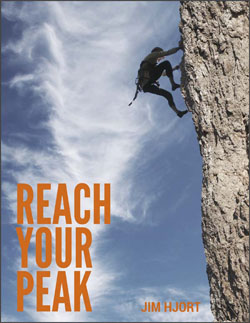Why Authentic Connection With Others Happens From the Inside Out
/The extent to which we’ve been able to individuate and become mostly self-sufficient, independent entities is commonly thought to be one measure of healthy psychological development.
Individuation is necessary for our day-to-day movement through the world so that know you know where you end and I begin, we can perform our roles in society, and we can each assume responsibility for acting wisely.
But if you never connect with others on the deepest level and allow your superficial identity to fade, your ability to actualize yourself and achieve your full human potential can suffer.
As we individuate, relationships with others mostly exist to meet a need, such as romantic love, support, or employment. We're encouraged to nurture mutually beneficial relationships in which both parties' needs are satisfied. Many people also view generosity with no expectation of return as one of the highest virtues.
However, even the most altruistic act remains a transaction between you and a separate other: there are a discrete giver and receiver.
Even with those you feel close to, have much in common with, and feel supported by, there can be a separation so subtle that you may not even be aware of it. It can take the form of certain topics avoided, certain emotions gone unexpressed or, most importantly, a depth of presence never explored.
It doesn't necessarily mean just having small talk. You can share secrets with another without really connecting. You can also deeply connect with others without divulging intimate details of your life, because it’s less about the information that is exchanged and more about the quality of your engagement.
Who you reveal, and who you don't
Recently I was discussing this topic with a therapist friend of mine, who astutely observed that our presence and transparency with others works like the scrims used in stage plays.
Scrims are sheer screens which, when illuminated properly from the audience’s direction, provide an opaque backdrop against which the action takes place, while allowing a different scene on the darkened stage behind it to remain invisible to the audience.
When set up this way, if someone turned the lights on backstage prematurely, then the illusion afforded by the scrim would be destroyed. Not the best outcome for a director seeking to suspend an audience’s disbelief. But how fascinating it might be for someone interested in what makes the stage production tick!
Dissolving the membrane between you and someone else—breaking down the you-and-I dichotomy and instead creating a you-with-me unified and enlivened whole—is perhaps the ultimate act of generosity.
The gift is that of full presence with a person, allowing the other to speak and be heard; to act and be observed; to be acknowledged as an expert on his or her own experience of life, and greeted with your genuine curiosity to learn about it.
It's not unusual for people to have at least some concern about how they're perceived by others—whether strangers or people whose opinions they respect. In fact, there's a psychological term for the way you manipulate others' impressions of you: “impression management.”
Reallocating some of your energy toward a selfless presence with another means you have less of it available for curating the impression you're trying to make. As the lights come up on the backstage parts of yourself, the opaque image you’re presenting begins to fade.
Connecting can feel risky . . .
Understandably, people can find this type of connection risky. If you ask them to identify the risks, they often cite the fear that their receptivity to the other person wouldn't be reciprocated or worse, they would be ridiculed, which hurts.
I've certainly faced the lack of reciprocity, particularly in the years when most of my personal and professional relationships were with people whose priorities and values diverged from my own. Even outside of business hours, the veil between me and others was often more like the heavy blackout curtain from a hotel room than a scrim.
Laughing and joking around camouflaged the complete inaccessibility of entire dimensions of our lives for discussion—anything non-mundane, essentially—and even the fun felt superficial. It's possible to connect strongly at the surface and remain disconnected underneath.
In a situation like that, you need to assess how badly you fear a blank stare in response to an attempt to connect with someone more deeply, versus the potential rewards. (Eventually I gave up trying, but I hadn't been harmed by the effort other than being known as the sensitive one in more than one office, if that counts.)
. . . and incredibly rewarding.
Now, on the other hand, the rewards can be quite glorious. While I'm in therapy sessions with clients, the deepest of connections often takes place. Our roles of therapist and client dictate a certain kind of context for the conversation, but I am so present with the person that I often feel what they're feeling in my body, as if I'm feeling it for myself.
It is an exhilarating and life-affirming thing, because it exercises one of the beautiful capacities we have as human beings.
If you’re lucky, you’ve had those moments of communion with another, whether in an intimate discussion or a moment of spontaneous hilarity in the produce section. If you have, then you know the sense of freedom, peace, and joy that can arise—whatever the content of the dialogue—when connecting from a place of internal substance.
It may be easier to arrive at this level of connection in the rarified environment of a therapy room than in your daily life, but it is right there to be had with anyone. Even a perfect stranger. Sometimes just sensing your offer of an undefended interaction will stir another person to respond in kind which, in turn, allows them to enjoy authenticity for a moment, too.
Perhaps you feel that you don’t want to connect with your authentic self to your boss, an acquaintance, or the person in front of you in line. But you could always try, and see what happens.
It could disrupt your impression management plan, but that plan may well be keeping you in the dark along with the other person. You’ll have to find your own ideal lighting setup: how much to shine on the scrim for dramatic effect, and how much to illuminate from within for the enlightenment of both of you.



















